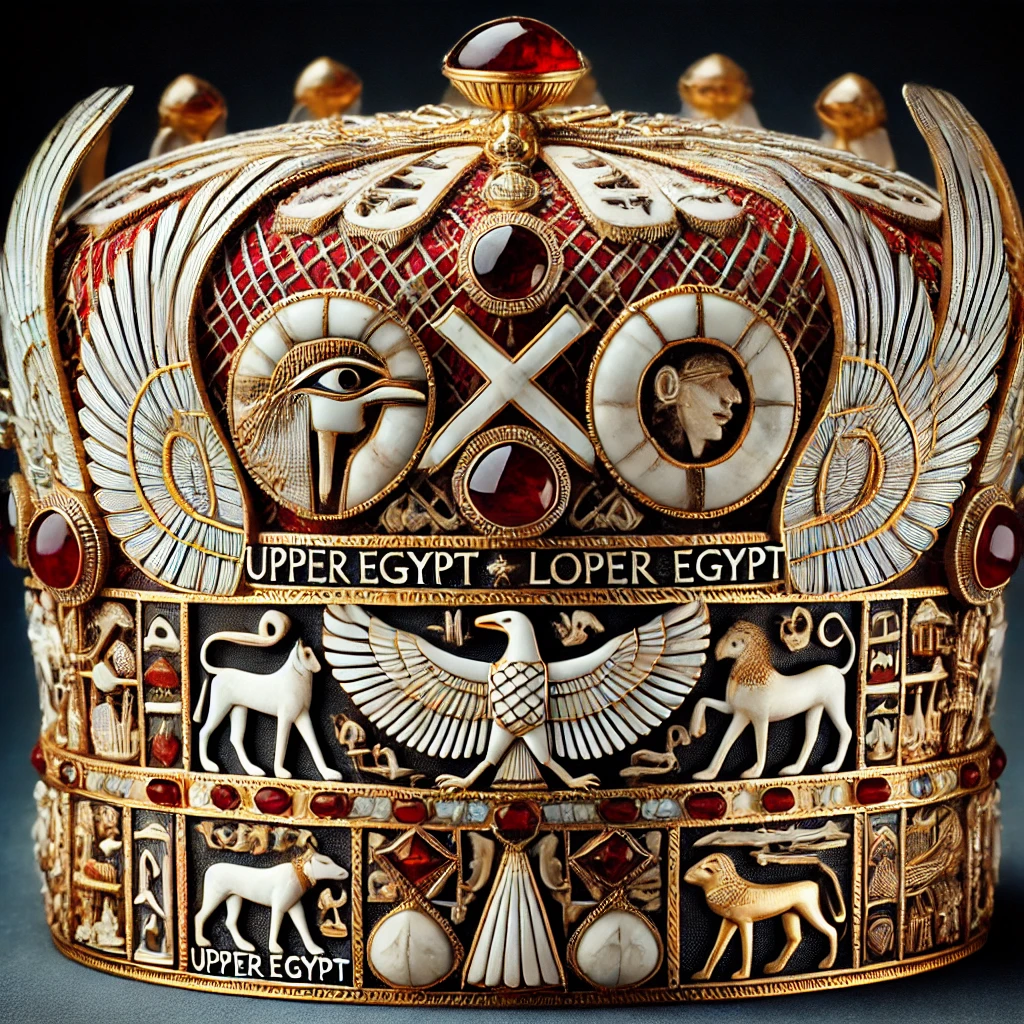
The Sons of Kush
A History Lesser Known About the sons of Kush Ancient Pharaohs
At the edges of the Sahara, where golden sands stretch endlessly beneath a blazing sun, lies a realm often overshadowed by the grandeur of its northern neighbor. This is the land of Kush, a powerful kingdom that arose south of Egypt, along the fertile banks of the Nile, in what is now Sudan. The history of Kush is a tale of majestic kings, resilient queens, and a culture that rivaled that of the great pharaohs of Egypt. It is a story of defiance, ambition, and a relentless quest for glory that has been etched into the desert’s very bones.
As the sun dips below the horizon, casting long shadows over the jagged skyline of the Meroe pyramids, one can almost hear the echoes of ancient voices—the whispers of the Sons of Kush, who once ruled a powerful and storied kingdom that played a vital role in shaping the course of African, and indeed world, history.
A Kingdom Born of the Nile
Long before the sands began to bury their secrets, the kingdom of Kush emerged from the mists of antiquity. Occupying the region known as Nubia, this land was a crucible of cultures where African, Egyptian, and Mediterranean influences mingled. It was a land rich with gold, ebony, ivory, and incense—a vital trade nexus that linked sub-Saharan Africa with the Mediterranean world.
Kush was first mentioned in Egyptian records around 2500 BCE, during Egypt’s Old Kingdom. From the beginning, the relationship between Egypt and Kush was a complex one—marked by trade, war, conquest, and cultural exchange. The Egyptians often regarded the Kushites as fierce warriors, a people of dark complexion with formidable archers known for their agility and skill. They were depicted in Egyptian tombs, their presence acknowledged with respect and, at times, fear.
By the 16th century BCE, during Egypt’s New Kingdom, Kush had come under Egyptian rule, and the region was administered as a province. The Egyptian pharaohs saw Kush not just as a land of riches but as a crucial buffer state that secured their southern borders. The Kushites, however, would not remain subservient for long.
The Rise of the Kingdom of Kush
The collapse of Egypt’s New Kingdom around 1070 BCE provided an opportunity for the Kushites to regain their independence. They established their own powerful kingdom with a capital at Napata, near the Fourth Cataract of the Nile. It was here, in the shadow of Jebel Barkal—a sandstone mountain believed to be the dwelling place of the god Amun—that the Kushites would carve out a new destiny.
The Kushite kings, known as the “Sons of Kush,” began to style themselves as the true heirs of the Egyptian pharaohs. They adopted Egyptian customs, deities, and symbols of kingship. They built temples to Amun and other gods, erecting grand monuments that mirrored those of their northern neighbors. But the Kushites did not merely imitate—they also infused these traditions with their own unique culture, creating a vibrant, hybrid civilization.
By the 8th century BCE, under the leadership of King Kashta, the kingdom of Kush began to exert influence over Upper Egypt. This culminated in the conquest of Egypt itself under Kashta’s son, Piye, who became the first ruler of the 25th Dynasty of Egypt—often called the “Kushite Dynasty.” Piye, and his successors, ruled as pharaohs for nearly a century, during which time they sought to restore the greatness of Egypt’s past.

The Reign of the Kushite Pharaohs
The Kushite Dynasty is perhaps one of the most fascinating yet underappreciated chapters in the history of ancient Egypt. These “Black Pharaohs” as they are sometimes called, ruled from Thebes to the Delta, and their domain extended deep into Nubia. They were deeply religious, and saw themselves as restorers of Maat, the divine order that governed the universe. Their rule was marked by monumental building projects, religious revival, and a return to the classical art forms of Egypt’s earlier dynasties.
One of the most notable Kushite pharaohs was Taharqa, who ruled from 690 to 664 BCE. Under his reign, Egypt saw a period of relative peace and prosperity. Taharqa was a builder king; he renovated temples across Egypt, including the great Temple of Amun at Karnak, and constructed new monuments that celebrated both his Kushite heritage and his role as pharaoh. His reign was celebrated for its grandeur, yet it was also a time of great tension, as the Assyrians, a formidable power from Mesopotamia, began to eye Egypt with conquest in mind.
Eventually, the Assyrians invaded, and in 656 BCE, the Kushites retreated back to their southern homeland, abandoning Egypt. Yet, far from marking the end of their influence, this retreat marked the beginning of a new era of prosperity in Kush.

Meroe
The Jewel of the Desert
With the loss of Egypt, the kingdom of Kush shifted its capital further south to Meroe, a city situated between the Fifth and Sixth Cataracts of the Nile. Meroe became the heart of a vibrant and wealthy civilization that would endure for nearly a thousand years.
Unlike Napata, which had been heavily influenced by Egyptian culture, Meroe developed a distinctly Kushite character. It became a hub of trade, ironworking, and monumental architecture. The Kushites were among the earliest adopters of iron smelting in Africa, and Meroe became renowned for its iron weapons, tools, and artifacts. They built hundreds of pyramids, smaller but steeper than those of Egypt, where their kings and queens were entombed with great riches.
Meroe was also a place of great innovation. The Kushites developed their own script, Meroitic, which remains only partially deciphered to this day, adding an air of mystery to their civilization. They maintained strong trade links with Egypt, Greece, Rome, and the rest of Africa, ensuring their kingdom’s wealth and prestige.

The Queens of Kush
Candaces and Warrior Women
No history of Kush would be complete without mentioning the powerful queens who ruled in their own right, known as “Kandake” or “Candaces.” These queens were not merely consorts but sovereigns with their own courts and armies. One of the most famous was Queen Amanirenas, who in 25 BCE led her forces against the Romans in a fierce campaign after Rome’s annexation of Egypt.
The Romans, led by Emperor Augustus, were stunned by the audacity and ferocity of the Kushite forces. The war ended in a treaty that allowed the Kingdom of Kush to retain its autonomy and ensured peace for several decades. These queens were often depicted as warriors, leading their armies into battle, and their names became legendary throughout the Nile Valley.
The Sunset of Kush
The glory of Meroe would eventually fade, as all great civilizations do. By the 4th century CE, the Kingdom of Kush had weakened due to internal strife, economic decline, and the shifting trade routes that favored the rise of Axum, a powerful kingdom in present-day Ethiopia. In 350 CE, Meroe fell to King Ezana of Axum, marking the end of the last great Nubian kingdom.
Yet, even as the sun set on the Kingdom of Kush, the legacy of the Sons of Kush endured. The pyramids of Meroe still stand today, rising out of the desert like jagged teeth, their shadows lengthening across the sands as the sun sets over the Sahara. They are silent sentinels, watching over the secrets of a people who once defied empires, ruled both Egypt and their own lands, and left an indelible mark on the tapestry of ancient history.
The Forgotten Legacy
Though often overlooked in mainstream narratives, the history of the Kingdom of Kush offers a rich, complex, and fascinating glimpse into the ancient world. The Sons of Kush were not merely “Egypt’s southern neighbors” but a dynamic and influential people with their own unique culture, politics, and vision of kingship. They were both heirs to the traditions of the pharaohs and innovators in their own right.
As we stand before the majestic panorama of the Meroe pyramids, watching the desert sky ablaze with the hues of sunset, we are reminded of the enduring strength and mystery of this forgotten civilization. The sands of time may shift and change, but the story of the Sons of Kush endures, waiting to https://bloginpeace.com/be rediscovered, retold, and reimagined by those who seek to understand the full breadth and depth of our shared human heritage.
